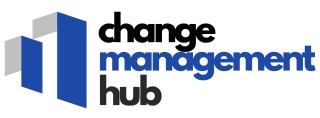
Understanding the Role of IT Services in Change Management
Importance of IT Services in Facilitating Change
IT services play a crucial role in organizational change management by streamlining processes and offering technical expertise that firms might lack internally. These services encompass a vast range of solutions including managed services, custom software development, and support structures such as help desks.
In a business landscape increasingly driven by technology, the reliance on IT service providers to achieve business goals is widespread. A proficient service provider can significantly help in navigating complex transitions, adapting to new tech stacks, and managing long term projects effectively. They provide managed service options that allow companies to focus on their core competencies while outsourcing tasks that require specialized knowledge.
Contributions to Business Efficiency and Agility
The right IT service provider can enhance a company's agility and efficiency, which are often crucial in today’s dynamic marketplace. By offering technical support and development services, they enable companies to adapt quickly to new opportunities or threats. With expertise in software development and project management, service providers can furnish tailor-made solutions that resonate with the business's strategic objectives.
Furthermore, engaging with a capable outsourcing partner helps companies manage technical challenges without the heavy costs associated with developing in-house expertise. This approach becomes especially valuable when integrating sophisticated technologies like artificial intelligence into existing systems, where external expertise can provide a significant edge.
Key Criteria for Evaluating IT Services
Identifying Core Evaluation Metrics
When assessing IT services for change management, it's crucial to determine the core evaluation metrics. These metrics revolve around a few key components, such as the company's overall business goals, customer satisfaction, and the technical expertise provided by the service provider. Evaluating these aspects can provide a deeper, more nuanced understanding of how well an IT service aligns with your core business objectives.
Assessment of Service Quality
One of the primary evaluation criteria is service quality. Assessing quality involves looking closely at customer service capabilities, like the availability and responsiveness of help desk support. This is crucial for assessing how well a service team can handle your business’s needs. Managed service and technical support are other critical areas to evaluate, as they play a vital role in maintaining operational continuity during a transformation.
Scalability and Flexibility of IT Services
Scalability is another vital criterion. As businesses grow, their IT needs change. It's essential to assess whether the IT services, including any managed services or custom software development, can readily scale to meet changing demands. Flexibility in adjusting services to accommodate business growth or evolving market conditions is essential for long-term success.
Alignment with Technology and Development Trends
The technology stack and software development practices adopted by service providers should align with current trends. This involves evaluating the providers' adoption of emerging technologies like artificial intelligence, which can offer innovative solutions and improve project management efficiency.
Integration with Existing Systems
Analyzing how well the IT services can integrate with existing infrastructure is another key factor. This includes assessing the compatibility of software solutions with existing systems, ensuring a seamless transition and minimizing disruption.
Expertise and Experience of Providers
The expertise and experience of service providers should not be overlooked. This includes evaluating their experience in managing similar projects or within the same industry. An experienced provider with a proven track record is often better equipped to help your business navigate the complexities of change management.
Value for Money
Finally, consider the value for money. Assessing IT services involves weighing the cost against the benefits received. Managed services, software development services, or other outsourced services should provide tangible benefits to the company, supporting its long-term objectives.
Tools and Techniques for IT Services Assessment
Key Tools and Resources for Evaluating IT Services
The effective assessment of IT services in the landscape of change management relies heavily on the deployment of robust tools and techniques. These resources not only enhance the understanding of service efficacy but also align business goals with technological competencies. To navigate the complex terrain of IT services evaluation, consider the following approaches:
- Customer Feedback and Metrics: Gathering direct feedback from customers, both internal and external, is a crucial step. Analyzing this data can reveal insights into satisfaction levels and areas needing improvement. Track customer service interactions to gauge the performance of help desk and managed service providers.
- Service Level Agreements (SLAs): Evaluate the existing SLAs to ensure they reflect realistic and achievable performance metrics. SLAs should be tailored to support long term company objectives and are crucial in the partnership with service providers.
- Technical Expertise Evaluation: Assessing the technical expertise of an IT service provider is vital. This involves reviewing their tech stack, software development capabilities, and how well they align with the company's development services needs.
- Project Management Tools: Utilize project management software to track progress, manage resources, and coordinate with outsourcing partners. These tools streamline communication with the team and help manage outsourced development solutions effectively.
- Performance Benchmarking: Regular comparisons against industry standards and best practices will help identify gaps in service performance. This practice encourages continuous improvement and leverages managed services for optimal results.
- Artificial Intelligence and Automation: Implementing AI and process automation can significantly enhance service evaluation. These technologies provide analytical insights and operational efficiencies that are otherwise hard to achieve manually.
For a comprehensive understanding of how these tools and resources fit into the broader framework of IT service assessment, the understanding the workflow of clothing decoration can offer relevant insights into using process flow diagrams effectively.
Common Challenges in IT Services Evaluation
Overcoming Obstacles in IT Services Assessment
Evaluating IT services is no walk in the park, as it often brings a set of challenges that service providers and companies must carefully navigate. Businesses looking to enhance their change management capabilities will benefit from understanding common hurdles in the evaluation process.- Complexity of Technology: Many organizations struggle with assessing the vast array of technology solutions they use. Managed services, software development, and tech stacks can be intricate, making it hard to pinpoint the best fit for business goals. It's essential to look at both technical and business perspectives to ensure seamless integration into existing processes.
- Limited Expertise: Even for seasoned providers, keeping up with the range of new tools and technologies can be daunting. Lacking in-house technical expertise might lead businesses to depend on external managed service providers or outsourcing partners, which can bring its own set of challenges in ensuring alignment with company objectives and effective communication.
- Service Consistency: Ensuring consistent service quality across different areas, from customer service to software development, is vital. Many companies face difficulties when trying to ensure that each managed service provider or desk provider maintains high standards and aligns with customer expectations.
- Resistance to Change: Resistance to adopting new solutions among team members can hinder progress. Developing a culture where change is embraced rather than feared needs considerable effort from both leadership and team members, which will help smooth the transition during the adoption of new tools.
- Coordination Among Providers: When multiple service providers are involved, coordinating efforts and ensuring cohesive support can be challenging. Effective project management and communication strategies are critical in overcoming this hurdle.
Case Studies: Successful IT Services Evaluation in Change Management
Real-World Examples of IT Services Evaluation Success
In the realm of change management, assessing IT services effectively can be the difference between success and failure. Here, we delve into some real-world examples where businesses have successfully evaluated IT services to drive change.
Case Study 1: Leveraging Managed Services for Seamless Transition
A mid-sized company in the retail sector faced challenges in transitioning to a new tech stack. By partnering with a managed service provider, they were able to streamline their IT operations. The provider's technical expertise and support ensured minimal disruption during the transition. This partnership not only helped in achieving their business goals but also enhanced their customer service capabilities.
Case Study 2: Custom Software Development for Enhanced Business Solutions
An e-commerce business sought to improve its customer experience through custom software development. By outsourcing to a reputable software development services provider, they were able to create a tailored solution that met their specific needs. The development services offered by the provider included project management and technical support, which were crucial in delivering a product that aligned with the company's long-term vision.
Case Study 3: Outsourcing IT Help Desk for Improved Customer Support
A financial services company struggled with maintaining an efficient help desk. By outsourcing to a specialized help desk provider, they improved their customer support significantly. The provider's expertise in managed services allowed the company to focus on core business activities while ensuring technical support was handled professionally.
Key Takeaways
- Partnering with the right service providers can greatly enhance a company's ability to manage change effectively.
- Custom solutions tailored to specific business needs can provide a competitive edge.
- Outsourcing certain services can free up internal resources, allowing companies to focus on strategic initiatives.
These case studies highlight the importance of evaluating IT services with a focus on aligning them with business objectives and leveraging external expertise where necessary. By doing so, companies can navigate the complexities of change management more effectively.
Future Trends in IT Services and Change Management
Emerging Trends That Will Shape the Future of IT Services in Change Management
The landscape of IT services in change management is continuously evolving as new technologies and methodologies emerge. Understanding these future trends is essential for businesses seeking to remain competitive and achieve their business goals. Here are some of the key trends that will shape the future of IT services and change management:- Artificial Intelligence (AI) Integration: The implementation of AI is poised to revolutionize how IT services are managed. AI can enhance service providers' ability to predict service disruptions, optimize resource allocation, and provide personalized customer support through chatbots and virtual help desk assistants. As AI becomes more advanced, it will likely play a pivotal role in service delivery and customer service management.
- Rise of Managed Services: With businesses increasingly relying on technology, managed services have become an attractive solution. These services allow companies to outsource routine IT operations to specialized service providers, who possess the necessary technical expertise and resources. This trend is expected to continue as organizations seek to focus their internal resources on more strategic business initiatives.
- Greater Emphasis on Custom Software Development: As businesses strive to meet specific operational needs, there is a growing demand for custom software solutions tailored to unique requirements. Development services will focus on creating bespoke applications that align perfectly with business objectives, enabling more efficient project management and better alignment with long-term business goals.
- Enhanced Collaboration with Outsourcing Partners: As the demand for specialized tech stack and solutions increases, businesses will look towards outsourcing partners to fill gaps in expertise and expand their development capabilities. This collaboration will allow companies to leverage external technical knowledge while maintaining control over strategic outcomes.
- Adoption of Agile and DevOps Practices: To keep pace with rapid technological advancements, businesses will increasingly adopt agile methodologies and DevOps practices. This shift will facilitate faster development cycles, improved team collaboration, and a more dynamic response to change management challenges.













